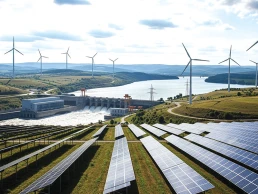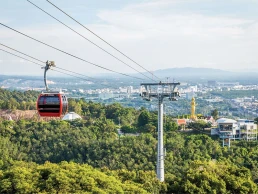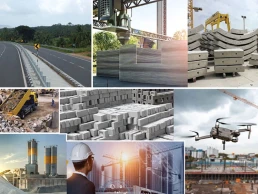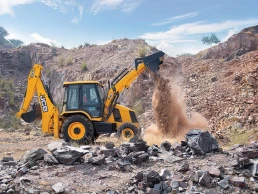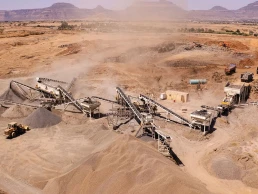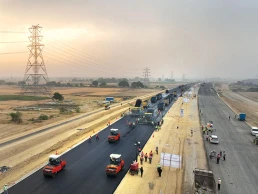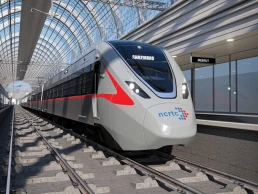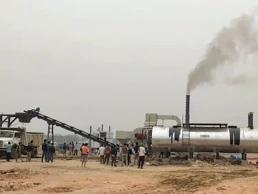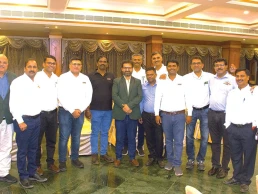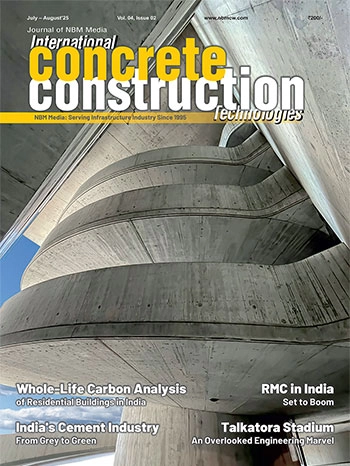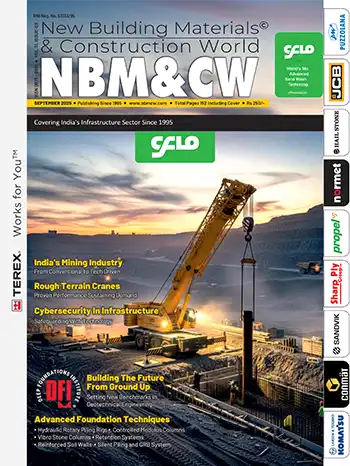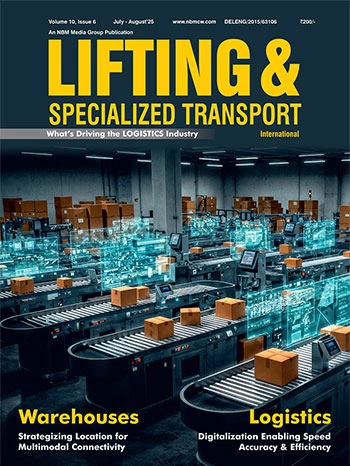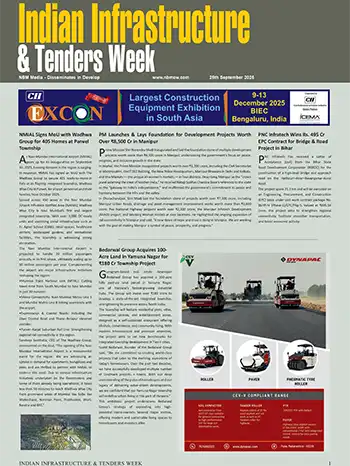Raising Dam Engineering Standard Safety & Climate Resilience with Scientific Knowledge & Technology

Mr. D.K. Sharma, newly elected President of the International Commission on Large Dams (ICOLD), is a veteran hydropower and dam engineering expert with over four decades of experience in planning, executing and managing large-scale dam and hydro projects in India and abroad, besides shaping dam safety frameworks, and advocating sustainable hydropower. At a time when dam infrastructure is central to India’s water-energy security and climate resilience strategy, Mr. Sharma, in a discussion with Maria R, brings deep insights into dam safety, the future of pumped storage, ICOLD’s global role, and the urgent need to modernize the country’s aging dam portfolio.
Congratulations on becoming ICOLD President—the second Indian to hold this prestigious position since 1930. You’ve held key leadership roles in both public and private power sector institutions. How will these experiences guide your role as ICOLD President?

I am deeply honoured and humbled by the trust ICOLD General Assembly has placed in me to serve as President of the International Commission on Large Dams (ICOLD/CIGB). I have accepted this role with optimism, and a clear commitment to the mission of ICOLD, which will include improving dam safety in India, amongst other responsibilities.
As Chairman of the Himachal Pradesh Electricity Regulatory Commission (HPERC), I was responsible for leading the organization’s efforts towards the determination and rationalization of electricity tariffs, and for overseeing its mission to ensure consumer protection, transparent policies, effective regulations, promotion of efficiency, environmentally friendly practices, and the adjudication of legal cases related to electricity.
As Chairman of the prestigious Bhakra Beas Management Board (BBMB), Ministry of Power, GoI, I was responsible for managing assets of national importance such as the Bhakra Dam, Pong Dam, Pandoh Dam, and Nangal Dam, in addition to six powerhouses with a total generation capacity of 2,919 MW, and 24 substations ranging from 33 kV to 400 kV.
As Managing Director of Himachal Pradesh Power Corporation Ltd., a public sector generation company, I was responsible for the investigation, planning, construction, and resource mobilization of 22 hydroelectric projects.
At Larsen & Toubro Ltd., a leading construction company in India, I worked for nearly six years for the construction of dams and hydroelectric projects, as well as on the development of the company’s proprietary dams and hydroelectric projects in India and approved neighboring countries.
Each role has reinforced the value of integrated leadership, and these experiences will certainly guide my efforts to promote dam safety, sustainability, global cooperation, and the achievement of new milestones through ICOLD.
Dam safety must go beyond structural checks—it needs to become a culture embedded across design, operations, and inter-agency coordination.
How has India’s dam sector evolved and what major opportunities and challenges do you foresee for its continued growth?
The hydropower sector has evolved significantly with advances in tunneling, digital instrumentation, dam safety frameworks, and emergence of pumped storage as a key enabler of renewable integration. However, India still faces challenges such as land acquisition, environmental clearances, and long project gestation periods.
Water storage, sustainable power generation, and distribution form the backbone of economic growth. Hence, in addition to PSPs, India must invest in constructing new water storage reservoirs and hydropower projects to support energy transition and enhance climate resilience. With the right policy push and inter-agency coordination, India can scale its capacity while maintaining sustainability and safety.
While solar and wind energy continue to grow, hydropower remains crucial for grid stability and long-duration energy storage. How do you evaluate India’s current trajectory in renewables, particularly in developing pumped storage projects (PSPs) as part of our energy transition?
For induction of intermittent renewable energy in the form of solar, wind and biomass into the grid, development of new hydropower projects, including pumped storage, has become even more crucial for energy transition. Energy storage in the form of water by construction of dams has become essential to combat the impacts of climate change and to ensure grid security and stability. Our policy has rightly been aligned towards construction of Pumped Storage Plants.
But at the same time, we need to accelerate construction of new hydropower projects with storage for energy transition. The present reliance on thermal power plants has to be phased out slowly. The irony is, that even nowadays, we are constructing new thermal power projects in India. Immediate course correction measures are required in this direction.

The Dam Safety Act, 2021 has been a significant step forward, but concerns remain around its implementation, coordination, and regulatory transparency. How do you view these challenges, and what global best practices can help strengthen India’s dam safety framework?
Dam Safety Act, 2021 is a landmark Act which India has enacted for safety of dams. It has taken us more than two decades to bring this Act for improved dam safety in the country. There is always a scope for improvement. In order to have better transparency in the formulation of regulations under the Act, The Dam Safety Committee needs to act in a more transparent manner by putting these regulations in the public domain for receiving suggestions from the public as well as from the stakeholders. This will lead to an improvement in the process of formulation of the regulations. Dam Safety is not a one-time activity but an on-going process. It will take a few more years before all the systems are put in place.
ICOLD plays a pivotal role in shaping global dam engineering standards by uniting science, safety, and sustainability. India’s active presence reflects our technical leadership and growing responsibility in global water infrastructure. As ICOLD President, my aim is to facilitate knowledge sharing, promote resilient practices, and empower developing nations to build safer, smarter dams.
India has one of the world’s largest portfolios of aging dams. What strategic interventions including rehabilitation, hydrological reviews, and instrumentation are essential to bring them up to modern safety, efficiency, and environmental standards?

India is leading the profession in dam safety through the World Bank funded Project ‘Dam Rehabilitation Improvement Project’ (DRIP I, II & III) for rehabilitation and improvement of existing dams. Some of the countries in the developing world are following the DRIP model of dam safety. For rehabilitation of dams, in view of the extreme events becoming more frequent due to impact of climate change, it is very important to carry out reviews of the design and the necessary upgradation of spillway capacity, if required.
So far as instrumentation is concerned, it is important to monitor the health of a dam on a regular basis. Every dam should have minimum instrumentation for monitoring its deflection, seepage through the body of the dam, and seismic activity in the dam.
You’ve described the Indus Waters Treaty as a ‘skewed arrangement’ that may not reflect today’s hydrological, environmental, or regional development realities. From a transboundary water management and dam engineering perspective, how should the treaty be modernized to better address sediment management, climate change impacts, and fair access for regions like Jammu & Kashmir?
It is true that the Indus Water Treaty from the time of its signing on September 19, 1960, was skewed and unsustainable. It is not only a water sharing treaty; it also has the following three main restrictions on India:
- It limits future expansion of irrigated cultivated land
- It put restrictions on storage capacities
- It restricts the live storage capacity of the Hydropower Plants (HEPs) reservoirs; so, they are in the category of “Run-of-the-River.”

Prof R. Lafitte, a Swiss engineer from the Federal Institute of Technology, and a Neutral Expert for Baglihar Project, stated: “It appears that the Treaty is not well developed as far as the provisions on sediment transport. This is not a criticism: the Treaty reflects the status of the technology on reservoir sedimentation in the 1950s”.
I would, however, like to refrain from offering any comment on the future of the Treaty.
The delayed formation of key bodies under the Dam Safety Act, 2021 including the NCDS has raised judicial and institutional concerns. From an international best-practice standpoint, what reforms would you recommend to improve inter-agency coordination and the enforceability of dam safety mandates?
Whenever a new act is passed, especially one as comprehensive as the Dam Safety Act, 2021, it takes time to draft detailed regulations and constitute the mandated committees. These bodies often require technically competent and experienced professionals. Identifying the right individuals, especially in a democratic system, requires careful evaluation and consensus, which naturally leads to delays. That said, to align with the international best practices, future reforms should aim to establish clear timelines for implementation, streamline inter-agency communication protocols, and create transitional arrangements to avoid vacuum periods.

ICOLD’s 29 Technical Committees cover a wide range of dam-related topics. How do you plan to leverage their work to further ICOLD’s mission of advancing dam engineering through global knowledge exchange, while also supporting capacity building in developing regions?
The International Commission on Large Dams (ICOLD) provides a forum for the exchange of knowledge and experience in dam engineering. The organization leads the profession in ensuring that dams are built safely, efficiently, economically, and without detrimental effects on the environment. Its original aim is to encourage advances in the planning, design, construction, operation, and maintenance of large dams and their associated civil works, by collecting and disseminating relevant information and by studying related technical questions.
29 Technical Committees of ICOLD deal with different technical aspects related to dams. Around 600 to 700 experts from 101 member countries of ICOLD participate in these Committees. These technical committees bring out reports known as ‘Bulletins’ on technical aspects of dams. Bulletins brought out by ICOLD have treasure of knowledge related to different aspects of dams.
Asia accounts for over 40% of global hydropower capacity. As former Chair of ICOLD’s Asia–Pacific Group, what forms of regional cooperation—joint research, shared protocols, or training programs, will you promote during your tenure?
During the ICOLD Board meeting held in Accra, Ghana (6–7 July, 2025), we discussed ways to accelerate the development and management of water and hydropower resources across the Asia–Pacific and other regions including Pumped Storage Plants through professional support and capacity building. ICOLD aims to foster regional cooperation by promoting knowledge exchange, technical training programs, and the sharing of international best practices in dam engineering.
These efforts will facilitate stronger collaboration between developed and emerging economies and help harmonize standards and protocols across borders.
With over 6,600 large dams, many aging rapidly, India cannot afford reactive maintenance. We must invest in predictive monitoring, digital tools, and lifecycle-based planning.
What transformative technologies like AI-driven monitoring, digital twins, advanced hydraulics, or climate-adaptive designs, do you believe will define the next generation of dam and water infrastructure?
Materials, technologies, and dam typologies are undergoing change at a rapid pace. AI-driven technologies and green construction practices are gaining momentum. AI-based monitoring systems are now being used for real-time data collection, predictive maintenance, and risk analysis. Digital twin models are emerging as powerful tools to simulate dam behavior under various operational and environmental scenarios, enhancing decision-making across asset lifecycle.
Given the rising frequency of extreme climate events, incorporating climate-adaptive design principles is no longer optional; it is now essential. Since climate change impacts are region-specific, each dam must be designed with localized projections in mind. Allowances for climate variability must be embedded in the design phase to ensure long-term resilience.
From green construction methods to climate-resilient frameworks, the next generation of dam and water infrastructure must be smarter, safer, and more sustainable.

Finally, as a veteran of India’s hydro sector and incoming ICOLD President, what message do you have for dam engineers and water professionals?
At this crucial juncture in ICOLD history, we are grappling with the challenges of dam safety, rehabilitation, and improvement of aging dams, the impact of climate change, water insecurity, and energy transition. Spatial and temporal distribution of rainfall is undergoing change, annual water distribution in rivers is changing with reduction of lean period flows, and the needs of society are becoming more complex. In view of these realities and uncertainties, the jobs of professionals working in dams are becoming even more critical.
We need to work hard to make sure that dam accidents are reduced to a minimum. Incidents of dam failure endanger the larger populations living downstream, killing hundreds of them. I believe that the likelihood of an event undermining the safety of a dam can be reduced through proper design, construction, operation and regular maintenance, driven by a commitment to dam safety.
From providing water and food security, dams today have become a dynamic solution to the problems of water, food and energy security as well as for energy transition. Professionals working on dams must consider the likely impact of climate change on their construction while designing new structures and focus strongly on their safety and durability. ICOLD will actively take up the wider role of dams with the National Committees in the policy framework of their respective countries.

































